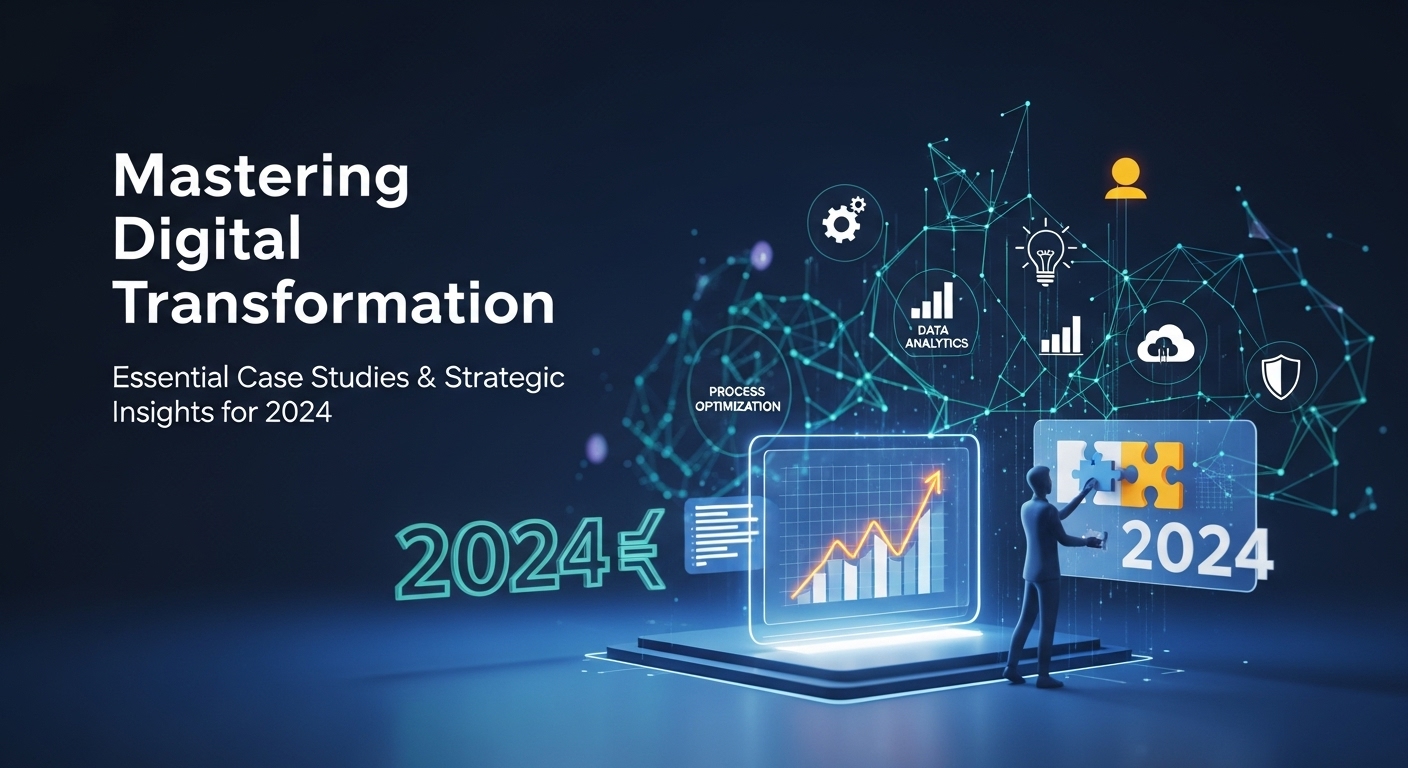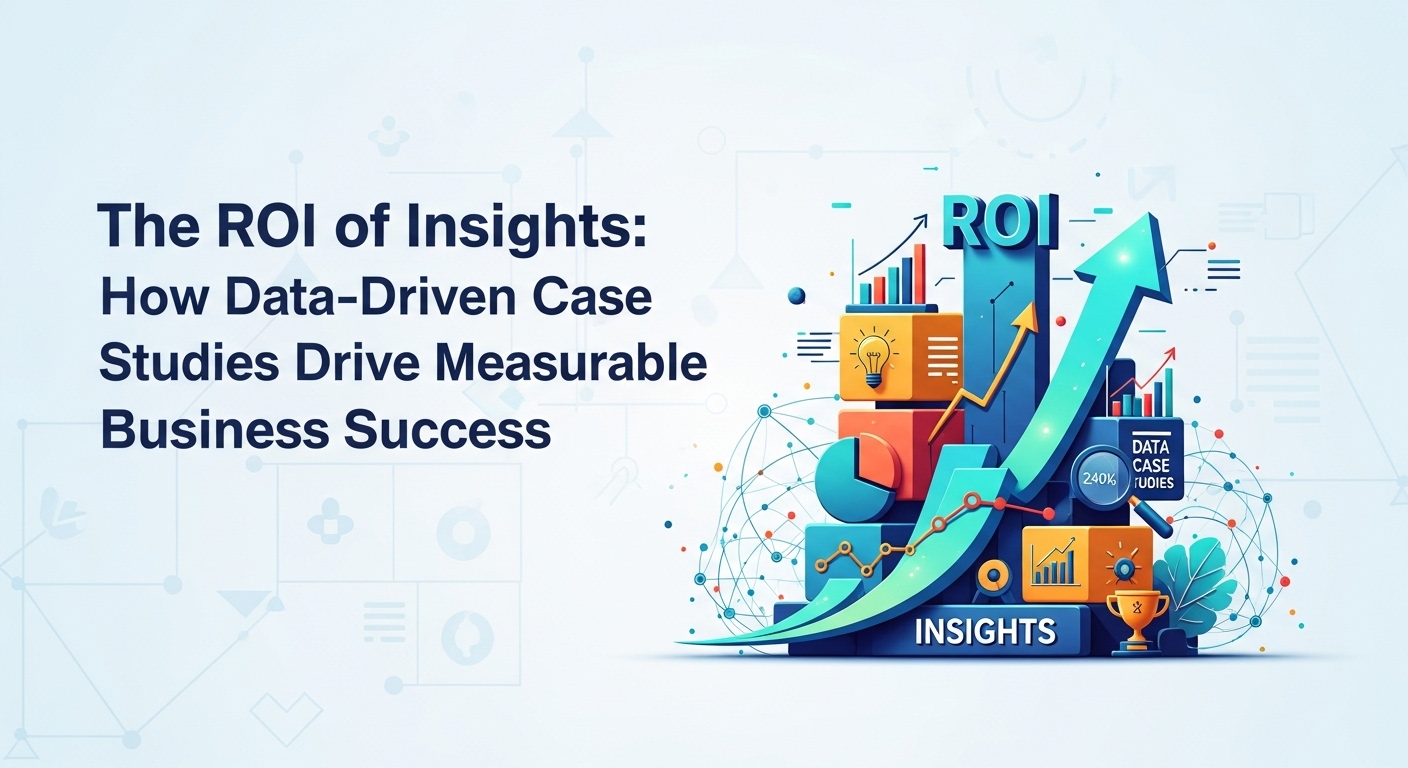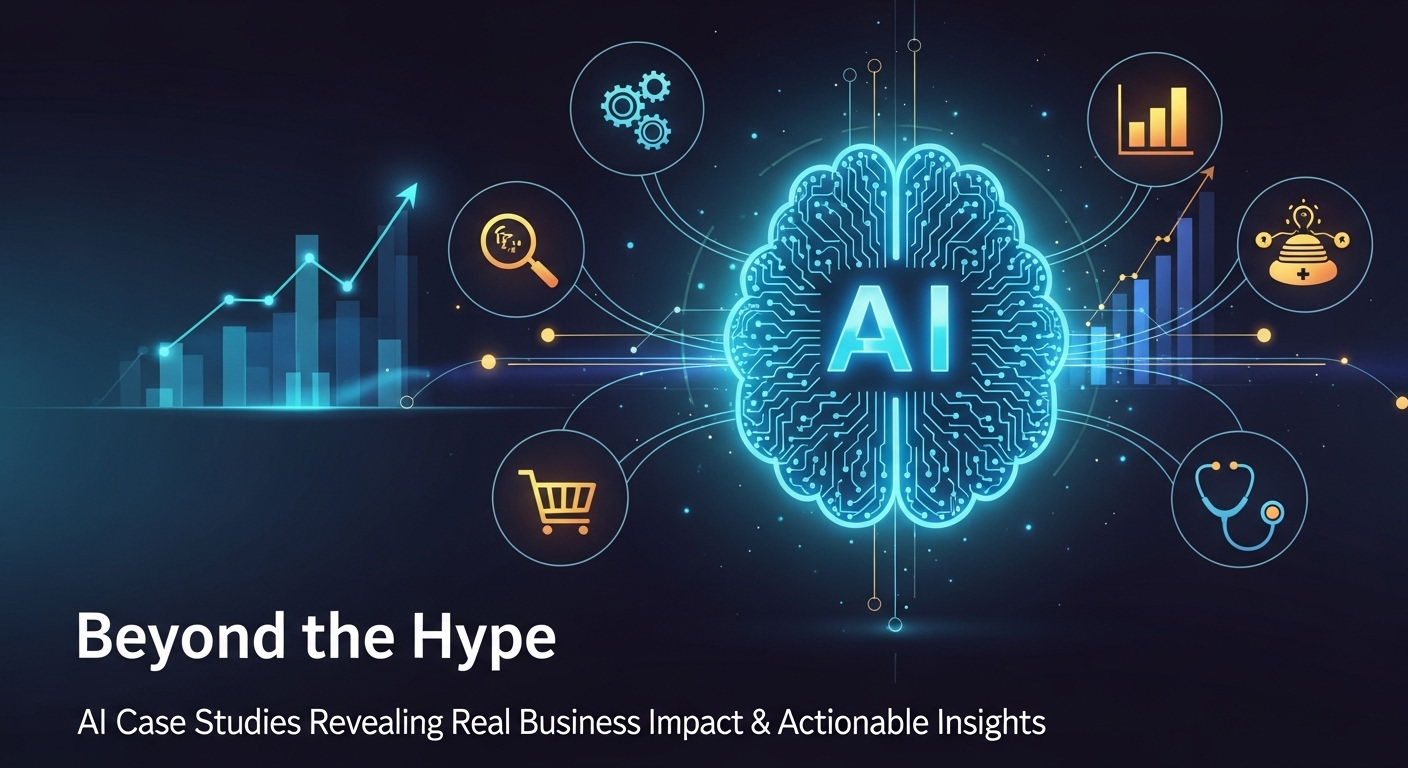The Unstoppable Wave of Digital Transformation in 2024
In today’s hyper-competitive landscape, ‘digital transformation’ is more than just a buzzword; it’s a fundamental imperative for survival and growth. Businesses across every sector are grappling with the need to evolve, innovate, and integrate technology into the very core of their operations. But what separates the trailblazers from those left behind? The answer often lies in learning from real-world examples. This is where the power of comprehensive case studies & insights comes into play. By dissecting the successes and failures of others, we can forge a clearer, more strategic path forward. This guide for 2024 is designed to move beyond theoretical concepts and provide you with actionable strategies drawn from tangible case studies, empowering you to master your own digital transformation journey.
Why Transformation Is More Than a Tech Upgrade
A common misconception is that digital transformation is simply about adopting the latest software or automating a few processes. This view is dangerously simplistic. True transformation is a holistic overhaul that encompasses culture, strategy, and people. Technology is merely the enabler, not the end goal. Without a foundational shift in mindset and a clear strategic vision, even the most advanced tech stack will fail to deliver its promised value.
The People-First Imperative
At the heart of every successful transformation is its people. Your employees are the ones who will use the new tools, follow the new processes, and ultimately deliver the new customer experiences. Ignoring the human element is a recipe for disaster. Resistance to change, lack of necessary skills, and poor communication can derail even the best-laid plans. Successful leaders understand that investing in training, fostering a culture of continuous learning, and ensuring employee buy-in from the very beginning are non-negotiable steps. It’s about empowering your team, not just equipping them.
Aligning Digital Goals with Business Strategy
Another critical component is the tight alignment of your digital initiatives with your overarching business objectives. What are you trying to achieve? Are you looking to enhance customer experience, improve operational efficiency, enter new markets, or create innovative products? Your digital strategy must be a direct answer to these questions. Without this clarity, you risk a scattered approach, where disparate projects pull the organization in different directions, wasting resources and creating internal friction. Every technological investment and process change should have a clear line of sight to a core business goal.
Deep Dive: Case Studies & Insights from Industry Leaders
Theory is useful, but application is everything. Let’s explore some powerful case studies that offer profound insights into successful digital transformation across different industries. These examples highlight how strategic implementation leads to remarkable outcomes.
Case Study 1: Retail Revolution at ‘Global Mart’
The Challenge: A legacy big-box retailer, ‘Global Mart’, was facing intense competition from agile e-commerce giants. Their in-store experience was dated, and they had a wealth of customer data they weren’t effectively using.
The Transformation: Global Mart embarked on a multi-year journey to become an omnichannel leader. They integrated their physical and digital operations, launching a sophisticated mobile app that offered in-store navigation, personalized promotions, and a ‘scan-and-go’ checkout feature. Behind the scenes, they invested heavily in an AI-powered data analytics platform. This platform analyzed purchasing history, browsing behavior, and even local weather patterns to create hyper-personalized marketing campaigns and optimize supply chain logistics.
The Strategic Insights: The key takeaway from Global Mart’s success is the power of a unified customer profile. By breaking down data silos between their e-commerce site and physical stores, they created a seamless customer experience. The insights gained from their data analytics didn’t just boost sales; they informed product development and improved inventory management, drastically reducing waste. Their story proves that data, when activated intelligently, is the ultimate competitive advantage.
Case Study 2: Manufacturing Makeover at ‘Precision Parts Inc.’
The Challenge: A mid-sized manufacturing company, ‘Precision Parts Inc.’, struggled with unpredictable machine downtime, which caused significant production delays and cost overruns. Their maintenance schedule was reactive, based on fixing things only after they broke.
The Transformation: Precision Parts integrated Internet of Things (IoT) sensors across their factory floor. These sensors continuously monitored the health and performance of critical machinery, tracking variables like temperature, vibration, and energy consumption. This data was fed into a predictive maintenance platform that used machine learning algorithms to forecast potential equipment failures before they occurred. Maintenance crews could now proactively service machines during scheduled downtime, preventing catastrophic failures.
The Strategic Insights: This is a classic example of shifting from a reactive to a proactive operational model. The case studies & insights from the world of smart manufacturing show that IoT is not just about collecting data; it’s about generating actionable intelligence. Precision Parts reduced their unplanned downtime by over 70% and increased their overall equipment effectiveness (OEE) by 20%. This transformation improved their bottom line and enhanced their reputation for reliability.
Case Study 3: Healthcare’s Digital Pulse at ‘HealthFirst Clinics’
The Challenge: A regional network of clinics, ‘HealthFirst’, faced challenges with patient accessibility, long wait times, and administrative inefficiencies that burdened their medical staff.
The Transformation: HealthFirst implemented a comprehensive telehealth platform, allowing patients to consult with doctors via secure video calls for non-emergency issues. They also rolled out a patient portal for appointment scheduling, prescription refills, and access to medical records. This freed up administrative staff and allowed clinicians to focus on more complex patient cases in person. The digital system also enabled better coordination of care between different specialists within their network.
The Strategic Insights: The digital transformation at HealthFirst was fundamentally about improving access and efficiency. By embracing telemedicine, they not only enhanced patient convenience but also optimized the allocation of their most valuable resource: their doctors’ time. This case demonstrates that digital tools can profoundly improve service delivery models, leading to better outcomes for both the provider and the patient.
Key Strategic Insights for Your 2024 Roadmap
Analyzing these diverse case studies reveals several recurring themes that are crucial for any organization planning its digital transformation in 2024.
- Data is the New Currency: Every successful transformation is built on a foundation of high-quality, accessible data. The ability to collect, analyze, and act on data-driven insights is what separates market leaders from the rest.
- Agility Over Rigid Plans: The digital landscape is constantly changing. The most successful organizations adopt an agile mindset, allowing them to test, learn, and pivot quickly. Long, rigid, multi-year plans are often obsolete before they are even fully implemented.
- Customer-Centricity is Paramount: Never lose sight of the end user. Whether your customer is a consumer, another business, or an internal employee, the goal of transformation should be to create better, more intuitive, and more valuable experiences for them.
- Security is Not an Afterthought: As you digitize more processes and collect more data, your vulnerability to cyber threats increases. A robust cybersecurity strategy must be integrated into your transformation from day one.
Conclusion: Chart Your Course for Transformation
Mastering digital transformation in 2024 is an ongoing journey, not a final destination. It demands bold leadership, a clear vision, and a willingness to learn and adapt. The case studies & insights we’ve explored from retail, manufacturing, and healthcare are not just stories; they are blueprints for success. They show that by focusing on people, aligning technology with strategy, and relentlessly pursuing data-driven improvements, any organization can thrive in the digital age. Now is the time to assess your own organization. Where are your opportunities? What challenges stand in your way? Use these insights to start the conversation, build your strategy, and begin your own transformation story.


